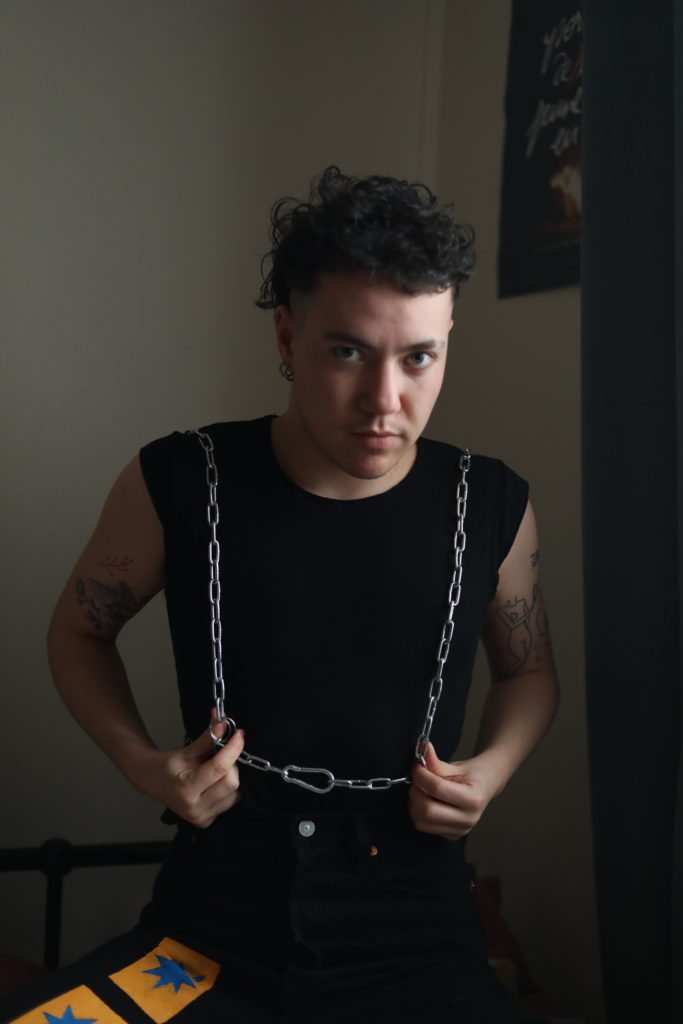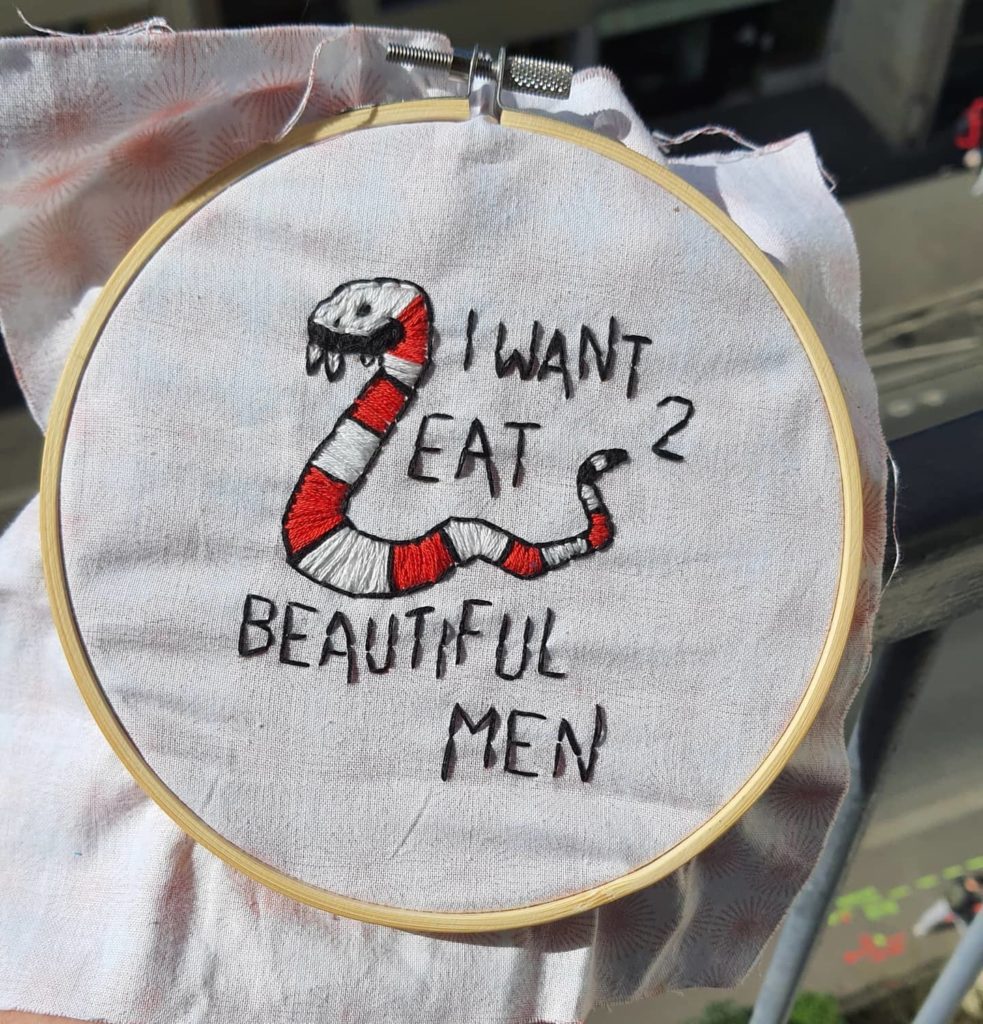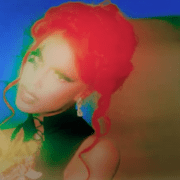Queer For It
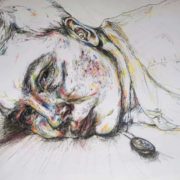
“I surround myself with other queer and often neurodivergent artists, who also don’t fit as well into this capitalist ‘ideal’ world, and it’s quite healing.“
Contribution by Eli Hayter (they/he)
Now more than ever has creativity been more vital and yet more mocked by the government. Making and creating is as human as it gets, just look at cave art and stories…and yet we’re brainwashed into thinking it’s not important as it’s “not contributing to the society”. But here’s the thing with capitalism, after a while, those who don’t benefit from it start to see it for what it really is… made up.
If you’re queer, a BIPOC, disabled and/or neurodivergent (having different neurology such as autism and ADHD), Transgender, or in any way different… Then you don’t benefit from the setup of this society. Scientists found that if you are autistic you are more likely to be transgender and vice versa; they looked into the science behind it if there is a commonality in the genes or a recurrent chemical make-up. The link is simpler than that. Autistic and other neurodivergent people see the world for what it is.
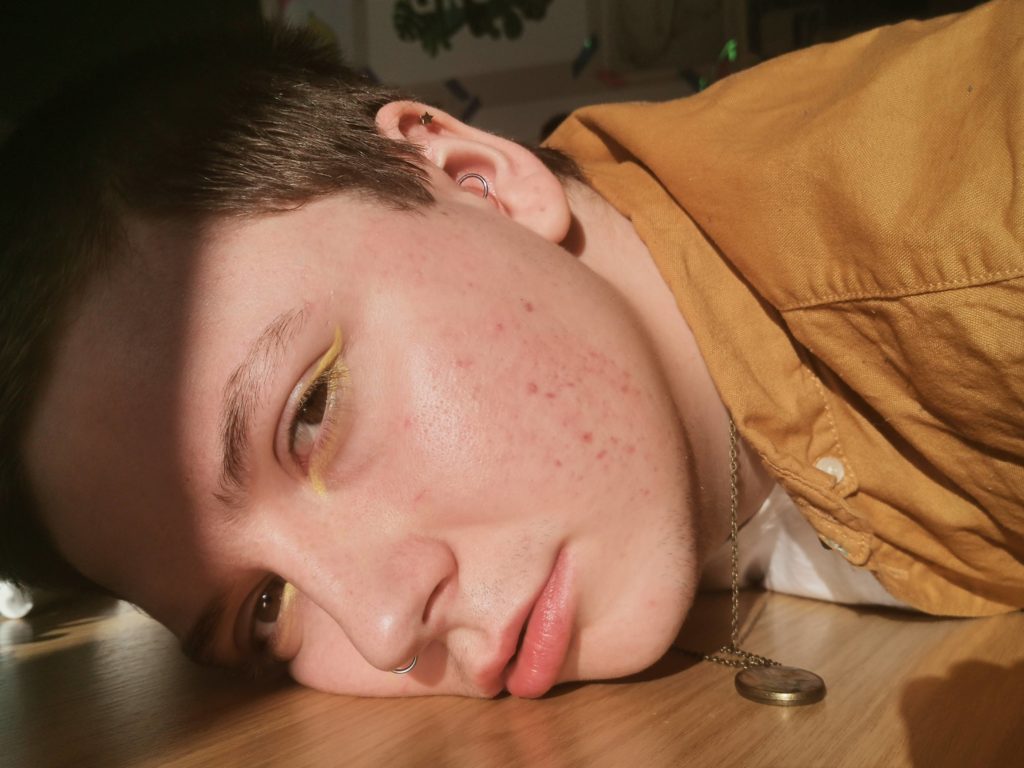
Eli Hayter 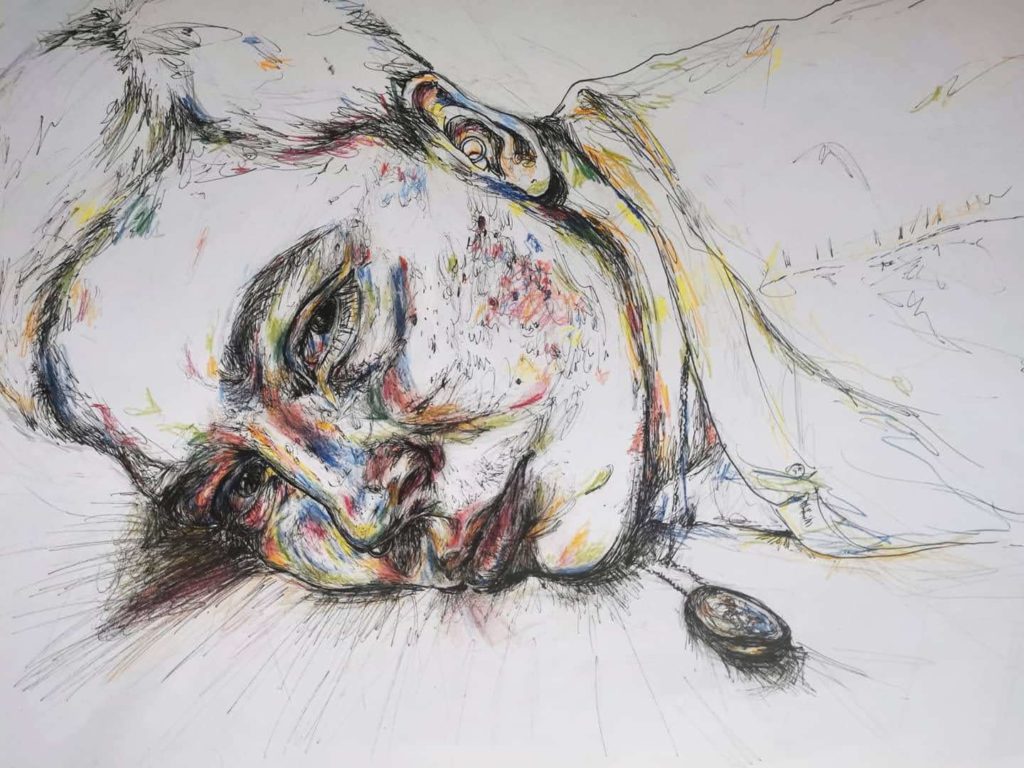
Eli Hayter
I realised in lockdown and finally admitted to myself that I, myself am autistic and a lot of things suddenly made sense. I remember weeping aged 17 as my dad and I sorted out university applications. He’d ask me what job I wanted… But the truth was the idea of going out every weekday, working 9 ‘til 5 for someone else was utterly soul-destroying to me.
I quickly lost hope in my life; I was completely trapped by this world. I had to go along with what society has set out for me regardless of how torturous it would feel. I settled on doing a degree in illustration. A job in illustration seemed like the ‘least’ worst. But still, I often felt suicidal as life on this earth felt like a punishment to me. Realising why I felt hopeless, but also that I was not alone was a huge turning point. Hearing other autistic people speak of the same struggles and despair made me realise it wasn’t just me versus the world anymore.
I heard this quote about autism: “the world wasn’t made for us, but the earth was”-(origin unknown). I have always felt connected to nature and this made so much sense to me. My feelings turned from “I don’t want to live in this world” to “I don’t want to live in a society the same way as everyone else”. Existing and existing within society were seen through different lenses, not one, but overlapping each other. I began getting excited by life again.
Autistic people are often transgender simply because we don’t hold the same weight to gender that society has told us to. Gender is internal self-identity. It’s not presentation or biology; it’s not stereotypes or appearances. If you strip gender back to what it really is, it’s something that impacts oneself, but shouldn’t impact those around you as much as our society has made it.
Neurodivergent people don’t hold themselves to what society has laid out to them because we see the truth.
The term neuroqueer has recently been popularised and its definition is “Uncertain about exactly what label(s) (e.g. asexual, nonbinary, pansexual, etc.) they fall under, due to reasons related to neurodiversity. This can encompass mental illnesses, developmental disabilities, learning disabilities, and all kinds of neurological differences. People who identify as neuroqueer often reject binaristic ideas of gender and sexual orientation. They can be nonconformists who think radically about queer and disabled identities.”- https://www.queerundefined.com
But how does this link to art and creativity?
Art is innate, it has no made-up rules or enforced binary, and it’s not there to serve capitalism. Art is true. The proof is that for as long as humans have existed, so has art. Without made-up rules, neurodivergent people are free to embrace creativity. I use art to ground myself, connect myself with the humans and things around me. I do self-portraits to get to know myself. Art is innocent and learning and curiosity and with no sly agenda.
Art has equal power with all, it benefits everyone equally. We are told art jobs are not valuable because the government weighs value on the amount of money we can make cis white men in power. Does “Fatima’s next job could be in cyber” sound familiar to anyone? But art is just and fair. It’s for a black, queer, disabled, poor, nonbinary person as much as it is anyone else.
The intersection between being queer, creative, and neurodivergent is a complicated one, but not a rare one. I spoke with Luciel who is also a queer neurodivergent artist. He uses many mediums including textile, embroidery, tattooing sculpture, and writing poetry and I found his work through the Instagram he runs (@kreativkollektiv123) where he features queer artists’ works. My work was featured on this page and because of him, I have a new community of like-minded online friends. I asked him how being creative, queer, and neurodivergent all intersect and affect each other for him personally and his first response was how he sees it affects “in how people react to it… It’s not something you’re supposed to be”. He went on to say how “my neurodivergence and queerness are facts about me, and my creativity is a response to that. I’m only lately coming to terms with my neurodivergence that I need different things and have different limitations but that doesn’t mean I’m stupid”
I often reflect on how we are taught this narrative that if you’re different you are wrong or stupid, and it’s just not true. And it’s something we, have to deal with internally ourselves. We have to unlearn internal transphobia and homophobia, racism, and ableism. Being neurodivergent and queer are not bad things, but we’re made to believe they are… That we are. Unlearning this is the only way we can love ourselves and express ourselves authentically.
“Art is self-expression, art is love, art is survival, art is power. What does it mean to me to make art? I couldn’t exist any other way, art is all I ever do and all I ever want to do”
Being neurodivergent and queer exposes us to the risk of more trauma and Luciel says how this side of his identity not only affects the content of his work but also the practicality of doing work. “I have a hard time concentrating, If a piece is really emotional I can’t work on it for too long at a time” “I switch between media’s so often because of my ADD”.
He also does not have any access to treatment, medication, or support for his ADD because of the barriers and difficulties of trying to get a diagnosis for neurodivergence as an adult. Not getting a formal diagnosis is a problem for the majority of neurodivergent adults, from waiting times to not being taken seriously, to them only understanding the symptoms of someone who was assigned male at birth. The only shortcut is to go private and as queer neurodivergent artists… We don’t have a lot of money spare.
Ajayini Sathyan has also faced a lot of barriers around neurodivergence but in very different ways.
Ajayini Sathyan is a Gender Non-binary creator and activist with Dyslexia, Dyspraxic, Dyscalculia, Dysgraphia, and ADHD. As well as a women, lesbian, intersex, non-binary, trans, asexual (WLINTA) BPOC activist and representative, certified queer peer counselor, gender and diversity student, and artist from Tamil Nadu. Ajayini’s has also has worked with LGBTQIA people, people living with HIV below the poverty line, Cis / Trans sex workers, Dalit women, and Dalit LGBTQIA and deals with politicized topics such as cultural origin, (neo) colonialism, critical whiteness, gender, and sexuality through spoken word/poems, art and through interactive lectures, workshops, and discussions.
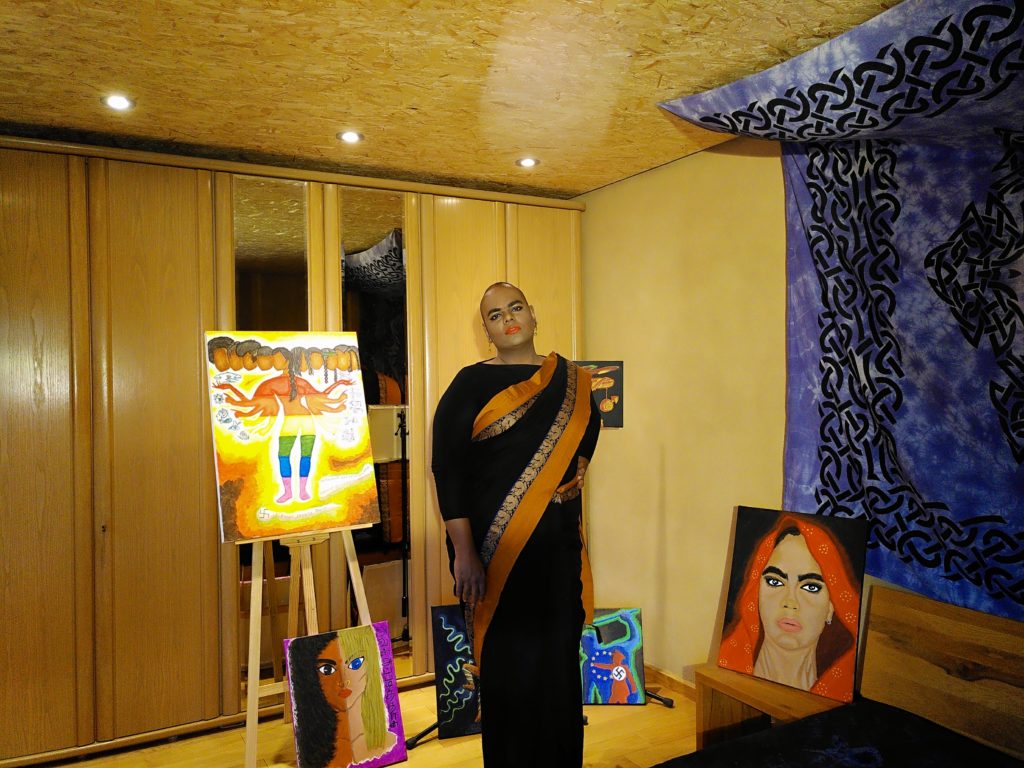
I asked the same question of how creativity, neurodivergence, and queerness intersected in Ajayini’s life. “I never decided to be an artist. Being creative was admonished by my family and my parents were very specific that I obeyed them and do only things that were instructed to me. Obviously, being neurodivergent has consequences and I turned out to be a very difficult child. So, after a certain point in my childhood, I was forbidden to draw or paint and anything I created was immediately found and destroyed and I was punished physically and psychologically“
Ajayini goes on to talk about how “living in Germany a few years ago, triggered a lot of childhood trauma which forced me to go to an all-white psychiatric catholic institution, where after a long time, I started to paint; Something in me exploded and it became hard for me to stop being creative. That creative energy which was repressed violently by my parents was flowing uncontrollably and I couldn’t stop“.
The impact of queerness and neurodivergence is shown in Ajayini’s art “Almost all of my art narrates the intersectional struggles that I face in a white patriarchal capitalist and violent society, I create art based on my struggles as a non-binary, lower caste, Tamil, neurodivergent, refugee; struggling with bipolar, PTSD, anxiety attacks and suicide ideation“. “All this creativity and effort comes from me being neurodivergent; because, as neurodivergent people, how we perceive and apply concepts and how we see ourselves and our surroundings around is completely different from someone who is not neurodivergent”
It’s clear to see that art not only impacts the viewer profoundly but also the creator. “I see art as an endless platform where I have the freedom to express. A platform where I’m not dictated or segregated or discriminated against. I feel that art for me must tell a story. I don’t believe in artistic elitism where people with a degree dictate what is art and what is not. I think all of us have an audience. I didn’t learn how to apply artistic techniques or educate myself to follow a strict form of artistic expression. I don’t even have a unique style or a signature technique. They’re just unhindered feelings and emotions about certain things I experience in my life.”
Art is simply creating something for no other agenda. A deep breath in life with an externally set itinerary. Luciel sums it up well “I surround myself with other queer and often neurodivergent artists, who also don’t fit as well into this capitalist ‘ideal’ world, and it’s quite healing… It’s quite healing to know that you’re not broken”
Contribution by Eli Hayter (they/he)
Check out the GUAP Arts & Culture section, to discover new art, film, and creative individuals.
